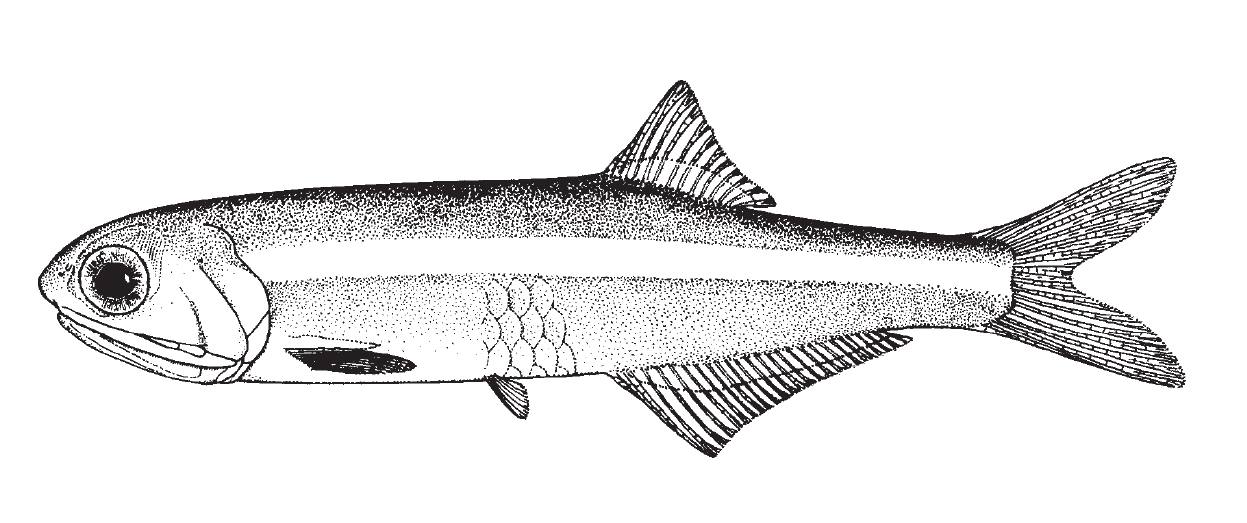Diagnostic characters:
Body fusiform, moderately compressed.Snout fairly short and blunt; posterior tip of maxilla pointed, reaching beyond anterior margin of preoperculum; jaw teeth small. Pseudobranch shorter than eye. Lower gill rakers 20 to 26; gill cover canals of panamensis-type. Anal fin with 23 to 30 branched rays, its origin at vertical through anteriormost portion (unbranched rays) of dorsal fin.Anus advanced, opening nearer to pelvic-fin tips than anal-fin origin. Colour: dorsum dark translucent grey, with narrow midlateral silver stripe (hidden until scales are shed).
|
Habitat, biology, and fisheries
Pelagic, shallow coastal waters, estuaries, and lagoons; found along beaches down to 36 m, but more common in areas with muddy bottoms and brackish waters less than 25 m; tolerates wide range of salinities (virtually fresh to full salinity or hypersaline conditions).A schooling species; schools tend to be located near surface, but changes in depth distribution occur seasonally and diurnally that are not well understood. Serial spawner; spawning takes place in the evening from late April to mid-July, perhaps through August off North Carolina, from May to November or February in water less than 20 m deep off Texas, possibly year-round off Biscayne Bay, Florida. In Terminos Lagoon, Mexico, eggs of A. mitchilli were abundant, found in polyhaline waters, and present throughout the year, with peak abundance in August, September, and May. Relative fecundity and minimum size at maturity for females in Terminos Lagoon, Mexico, estimated to be 823.8 eggs/g and 37 mm, respectively; in Chesapeake Bay, Virginia, annual egg production was estimated to be 45 110 eggs/female (55 mm fork length), with average batch fecundity of 643 to 740 eggs/g. Eggs pelagic, transparent, barely elliptical, 0.84 to 1.11 mm.Feeds on zooplankton, predominately copepods, also on gastropods, isopods,mysid shrimps, and small fishes. No special fishery. Caught with beach seines, also with trawls. Mainly used as a baitfish and to a small extent for anchovy paste. In areas where abundant, extremely important in estuarine and coastal food webs; links secondary plankton production to fisheries output. Separate statistics are not reported for this species.
|
